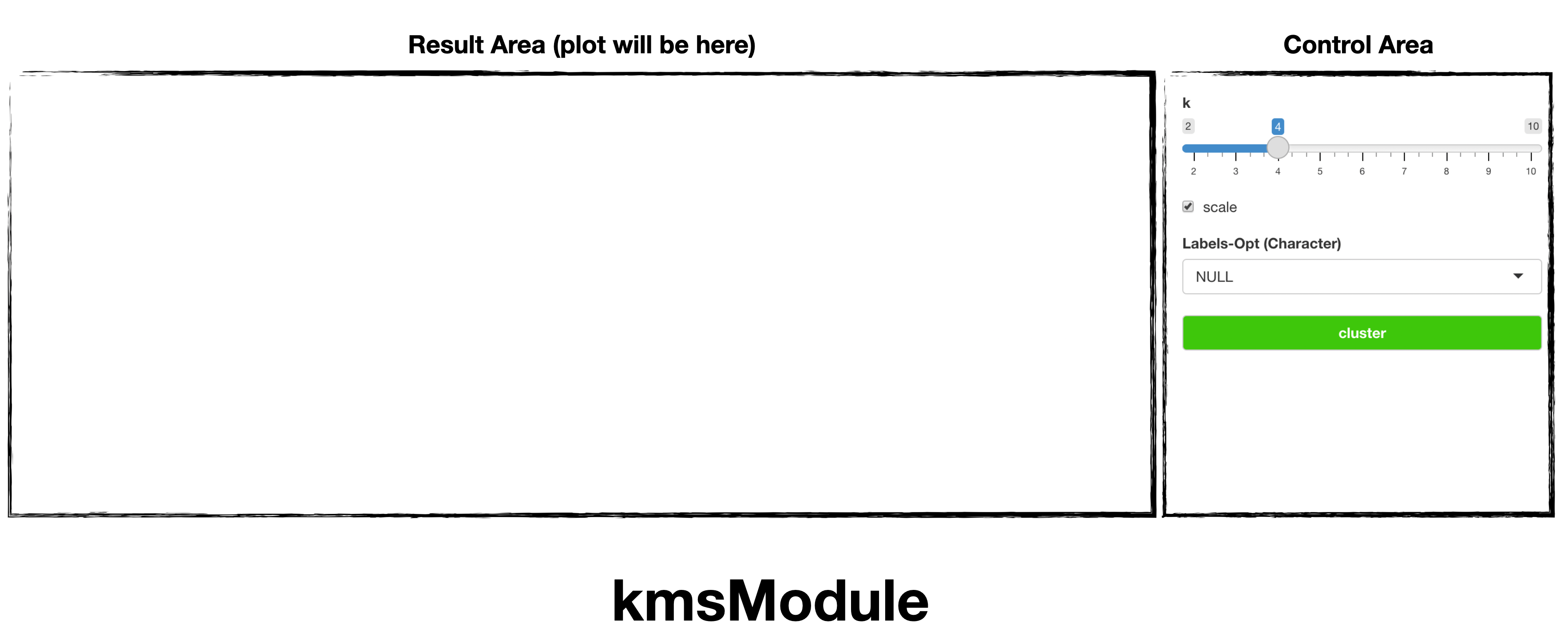Introduction
soroban’s kmsModule generates k-means
cluster.
In this article, we’ll use USArrests dataset of datasets,
which can be just use by data("USArrests")
This article is based on 0.0.1 Version of soroban
Declare module
soroban’s module assumes that used in the Shiny application.
and You can use snippet(type shinyapp) to build very
basic shiny application.
library(shiny)
ui <- fluidPage(
)
server <- function(input, output, session) {
}
shinyApp(ui, server)This application will show nothing.
So let’s add treeModule in ui.
ui <- fluidPage(
mod_kmsModule_ui(
id = 'module'
)
)also, treeModule in server.
server <- function(input, output, session) {
mod_kmsModule_server(
id = 'module',
inputData = reactive(datasets::USArrests)
)
}So final (which is very basic) code will like this. (Assume data from
AER loaded.)
library(shiny)
ui <- fluidPage(
mod_kmsModule_ui(
id = 'module'
)
)
server <- function(input, output, session) {
mod_kmsModule_server(
id = 'module',
inputData = reactive(datasets::USArrests)
)
}
shinyApp(ui, server) # Run applicationYou should notice 2 things.
- both
idin ui and server should be same. -
inputDatain server should be format of reactive
Structure of kmsModule

treeModule is consisted with Control Area and
Result Area
and below using flow.
- Declare module (we did already)
- select
K - build
Cluster
If data has different scale (not normalized), check
scale.If data has label (name), you can select if as
Labels-Opt
Usage of kmsModule
Using USArrests, we’ll group city by their
similarity.
Set K as 4

For any issue or suggestion, please make issue in soroban’s github.
